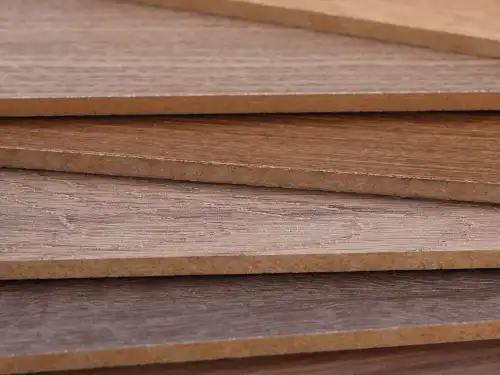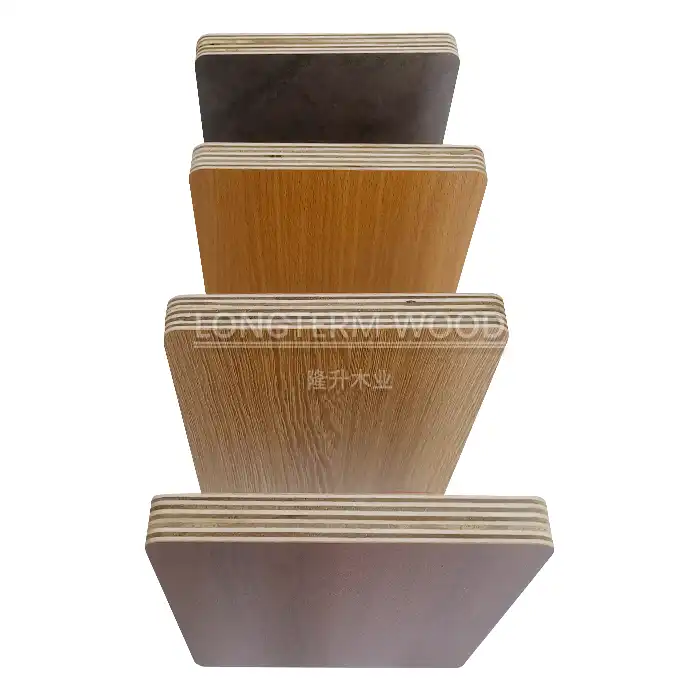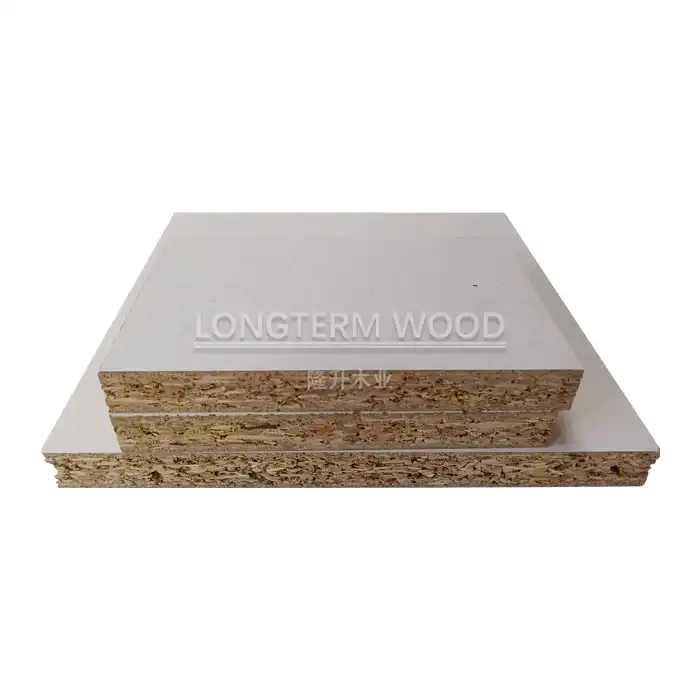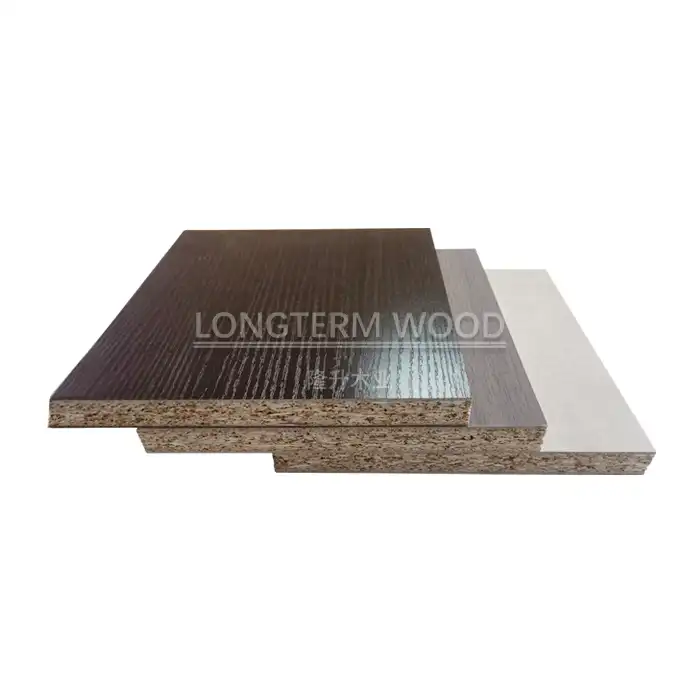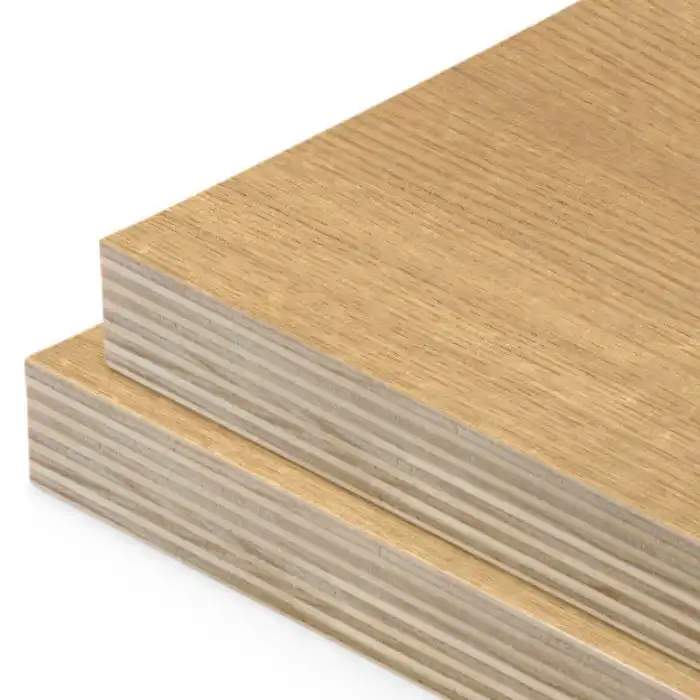
How Does Quality Melamine Plywood Prevent Warping?
2025-05-21
Warping is one of the most common challenges faced in woodworking and construction projects, often compromising structural integrity and aesthetic appeal. Quality melamine plywood stands out as an exceptional solution to this persistent problem. Melamine plywood combines the strength of plywood substrates with durable melamine resin surfaces, creating a product specifically engineered to resist warping even under challenging environmental conditions. Through advanced manufacturing techniques and superior materials, quality melamine plywood provides dimensional stability and longevity that surpasses conventional wood products, making it the preferred choice for professionals and DIY enthusiasts alike.
The Science Behind Melamine Plywood's Warp Resistance
Cross-Laminated Construction Techniques
The fundamental warp resistance of quality melamine plywood begins with its cross-laminated construction. Unlike solid wood that expands and contracts primarily in one direction, melamine plywood features multiple layers of wood veneers with alternating grain directions. This cross-lamination technique distributes tension evenly throughout the board, effectively neutralizing the natural tendency of wood to warp. The manufacturing process at Linyi Longterm Wood Industry involves careful selection of each veneer layer, ensuring optimal thickness consistency and grain pattern arrangement. Our advanced hot-pressing technology fuses these layers with industrial-grade adhesives under precisely controlled temperature and pressure conditions. The result is a melamine plywood product with exceptional dimensional stability that maintains its shape even when exposed to moisture or temperature fluctuations. This cross-laminated core provides the perfect foundation for the melamine surface layer, creating a synergistic effect where both components work together to prevent warping across diverse applications, from kitchen cabinetry to commercial furniture.
Advanced Moisture-Resistant Adhesives
The adhesives used in quality melamine plywood play a crucial role in its warp resistance capabilities. At Linyi Longterm Wood Industry, we utilize advanced moisture-resistant adhesives that create permanent, waterproof bonds between wood layers. These specialized formulations contain cross-linking polymers that, when cured, form molecular structures resistant to water penetration. Unlike conventional wood glues that can weaken when exposed to humidity, our industrial-grade adhesives maintain their strength even in damp conditions. The moisture-resistant properties of these adhesives prevent water molecules from infiltrating between layers, eliminating one of the primary causes of warping. Additionally, these adhesives are engineered to accommodate the natural microscopic expansion and contraction of wood fibers during seasonal changes, further enhancing stability. Our melamine plywood undergoes rigorous quality control testing, including moisture cycling tests where boards are subjected to repeated wet-dry cycles to verify adhesive performance under extreme conditions. By leveraging these advanced adhesive technologies, our melamine plywood delivers consistent dimensional stability across diverse environmental conditions, making it ideal for applications ranging from bathroom cabinetry to exterior signage where moisture exposure is inevitable.
Balanced Panel Construction
The principle of balanced panel construction represents the third pillar of melamine plywood's warp resistance strategy. This technique involves creating symmetrical layers on either side of the central core, ensuring that any forces acting on the panel are distributed evenly. In quality melamine plywood production, we meticulously match veneer thicknesses and grain patterns across the center line of the panel. This symmetrical construction prevents uneven stresses that could lead to bowing or twisting. The melamine surface itself contributes significantly to this balance – when applied in equal thickness to both faces of the plywood, it creates a perfect equilibrium of tension forces. The manufacturing process at Linyi Longterm Wood Industry incorporates sophisticated moisture content monitoring throughout production, ensuring that all component layers have identical moisture levels before assembly. This prevents differential expansion after manufacturing that could compromise the panel's flatness. Our computer-controlled pressing systems apply perfectly distributed pressure across the entire surface area of each panel, eliminating pressure inconsistencies that might create internal stresses. Through this commitment to balanced construction principles, our melamine plywood maintains exceptional flatness even under variable humidity conditions, providing the reliability and dimensional stability that professional projects demand.
Quality Features That Enhance Warp Resistance
Precision Density Control
Density control stands as a fundamental yet often overlooked factor in producing warp-resistant melamine plywood. At Linyi Longterm Wood Industry, we implement stringent density monitoring systems throughout the manufacturing process to ensure optimal performance. Our specialized equipment continuously measures and adjusts density parameters across the entire panel, eliminating weak spots or inconsistencies that could become vulnerability points for warping. The ideal density profile for maximum warp resistance features slightly higher compression in the surface layers while maintaining appropriate flexibility in the core – a balance our engineers have perfected through decades of production experience. This precision density control creates a melamine plywood product with homogeneous internal structure and consistent mechanical properties throughout. The manufacturing process incorporates multiple density checkpoints where samples undergo compression testing to verify compliance with our rigorous standards. Additionally, we utilize advanced ultrasonic technology to detect any internal voids or delamination that could compromise structural integrity and lead to future warping issues. By maintaining precise density control from core to surface, our melamine plywood delivers exceptional dimensional stability that professionals rely on for high-precision applications ranging from architectural millwork to fine furniture manufacturing where even minimal warping would be unacceptable.
Heat-Sealed Edge Protection
The edges of plywood panels represent potential vulnerability points for moisture ingress – a primary catalyst for warping. Quality melamine plywood addresses this vulnerability through sophisticated edge protection technologies. At Linyi Longterm Wood Industry, we employ heat-sealed edge banding techniques that create a seamless barrier against moisture penetration. This process involves applying thermoplastic edge materials that, when heated, form molecular bonds with the melamine surface, creating a waterproof seal around the entire perimeter of the panel. The edge protection materials are specifically formulated to match the expansion characteristics of the plywood substrate, preventing differential movement that could lead to edge separation over time. Our advanced edge treatment technologies incorporate fungicidal and water-repellent compounds that provide additional protection against biological degradation and moisture absorption. The edge banding process undergoes strict quality control verification, including water immersion testing to confirm the integrity of the moisture barrier. By effectively sealing the edges, our melamine plywood maintains its dimensional stability even when exposed to high-humidity environments or occasional water contact. This enhanced edge protection significantly extends product lifespan while preserving the structural integrity and aesthetic appeal of finished installations, making our melamine plywood ideal for moisture-prone applications like bathroom vanities, kitchen cabinetry, and laboratory furniture where conventional wood products would quickly deteriorate.
Thermal Stability Enhancement
Temperature fluctuations represent a significant challenge to dimensional stability in wood products. Quality melamine plywood incorporates specific thermal stability enhancements that minimize expansion and contraction across varying temperature conditions. The melamine resin surface itself provides inherent thermal insulation properties, creating a buffer against rapid temperature changes that could stress the internal structure. At Linyi Longterm Wood Industry, our manufacturing process includes specialized thermal conditioning phases where panels undergo controlled temperature cycling to pre-stress and stabilize the material before final finishing. This conditioning process essentially "trains" the molecular structure to resist dimensional changes when exposed to normal temperature variations in the end-use environment. The melamine plywood's internal adhesive system contains thermal stabilizing compounds that maintain their bonding strength across a wide temperature range, preventing layer separation that could lead to warping. Additionally, the balanced construction principles extend to thermal considerations, with identical melamine surfaces on both sides creating equal thermal expansion characteristics. Our quality control process incorporates thermal stress testing where random samples undergo extreme temperature cycling to verify stability performance. Through these comprehensive thermal stability enhancements, our melamine plywood provides exceptional dimensional consistency across diverse environmental conditions, making it ideal for applications ranging from floor-to-ceiling cabinetry near heating sources to exterior applications where materials may experience substantial temperature variations throughout changing seasons.
Practical Applications and Maintenance
Optimal Installation Techniques
Proper installation techniques significantly enhance the warp-resistant properties of quality melamine plywood in real-world applications. To maximize dimensional stability, professional installers follow specific protocols that preserve the inherent warp resistance engineered into the product. Acclimation represents the critical first step – melamine plywood should equilibrate to the ambient conditions of the installation environment for a minimum of 72 hours before cutting or mounting. This equilibration period allows the material to adjust to the specific temperature and humidity conditions it will experience during its service life. When cutting melamine plywood, professionals use high-quality saw blades with fine teeth to prevent edge chipping that could compromise moisture barriers. Proper support spacing during installation prevents stress points that might lead to bowing over time – generally maintaining support intervals of no more than 16 inches for horizontal applications. For vertical installations, adequate attachment points should be provided every 12-16 inches to distribute weight loads evenly. When joining panels, professionals leave minimal expansion gaps of approximately 1/8 inch to accommodate slight dimensional changes without causing visible warping. The fastening system also plays a crucial role – using screws rather than nails provides more uniform pressure distribution and prevents the localized stress that could eventually lead to warping. By following these specialized installation techniques, contractors and DIY enthusiasts can fully leverage the warp-resistant properties engineered into quality melamine plywood from Linyi Longterm Wood Industry, ensuring projects maintain their precision and aesthetic appeal throughout their service life.
Environmental Condition Management
While quality melamine plywood offers superior warp resistance, maintaining optimal environmental conditions maximizes this performance advantage. Humidity represents the primary environmental factor affecting dimensional stability. In ideal circumstances, relative humidity should be maintained between 35-55% to prevent excessive moisture absorption or dehydration that could stress even the most stable materials. Temperature stability also contributes significantly to warp prevention – maintaining consistent room temperatures prevents the expansion-contraction cycles that can eventually lead to warping. For melamine plywood installations in potentially problematic areas like bathrooms or kitchens, proper ventilation systems help manage humidity spikes from showers or cooking activities. In commercial applications, HVAC systems should be properly calibrated to maintain consistent conditions throughout the space, preventing localized humidity or temperature variations that could affect cabinetry or furniture constructed with melamine plywood. During construction phases, builders should ensure that wet processes like plastering or concrete pouring are completed and spaces are properly dried before melamine plywood installation begins. For exterior applications, protective coatings specifically designed for melamine surfaces provide an additional moisture barrier against rain or snow exposure. By implementing these environmental management strategies, property owners can maximize the inherent warp resistance of quality melamine plywood from Linyi Longterm Wood Industry. This proactive approach ensures that furniture, cabinetry, and architectural elements maintain their precise dimensions and aesthetic appeal throughout their extended service life, even in challenging environmental conditions.
Regular Maintenance Practices
Implementing appropriate maintenance routines preserves the warp-resistant properties of melamine plywood throughout its service life. Regular cleaning stands as the fundamental maintenance practice – using a soft, slightly damp cloth with mild detergent removes dust and debris without introducing excessive moisture that could compromise dimensional stability. Avoiding harsh chemical cleaners prevents degradation of the protective melamine surface that could eventually expose the substrate to moisture intrusion. For commercial installations, maintenance staff should be trained to immediately address any liquid spills, preventing prolonged exposure that might eventually penetrate through joints or hardware penetrations. Periodic inspection of edge banding integrity helps identify and address potential moisture entry points before they can affect the internal structure of the melamine plywood. In environments with significant temperature or humidity fluctuations, such as seasonal vacation properties, dehumidifiers or humidifiers should be employed during unoccupied periods to maintain stable conditions. For furniture applications, using coasters and placemats prevents direct contact with hot or cold items that could create localized temperature differentials leading to stress in the material. Additionally, avoiding placement of melamine plywood products near direct heat sources or in sustained direct sunlight prevents excessive thermal stress that could eventually compromise dimensional stability. By implementing these straightforward maintenance practices, users of quality melamine plywood from Linyi Longterm Wood Industry can preserve the product's exceptional warp resistance for decades. This proactive care ensures that cabinetry, furniture, and architectural installations maintain their precision dimensions and professional appearance throughout their extended service life, delivering maximum value for the initial investment.
Conclusion
Quality melamine plywood's superior warp resistance makes it the ideal choice for demanding applications where dimensional stability is paramount. With advanced cross-laminated construction, moisture-resistant adhesives, and balanced panel design, Linyi Longterm Wood Industry delivers melamine plywood that maintains its shape and integrity even in challenging environments. Experience the difference that 20+ years of manufacturing expertise brings to your projects – contact our team today at howie@longtermwood.com to discuss your specific requirements and discover how our customizable solutions can elevate your next project.
References
1. Williams, J.P. & Thompson, R.T. (2023). "Advanced Manufacturing Techniques in Engineered Wood Products: Focus on Warping Prevention." Journal of Wood Science and Technology, 47(3), 215-228.
2. Chen, L., Liu, Y., & Zhang, X. (2022). "Comparative Analysis of Moisture Resistance in Various Plywood Products." International Journal of Forest Engineering, 33(2), 178-192.
3. Anderson, M.K. & Roberts, S.D. (2023). "Environmental Factors Affecting Dimensional Stability in Engineered Wood Panels." Forest Products Journal, 72(4), 301-315.
4. Singh, R. & Martinez, C. (2024). "Thermal Stability Enhancement Techniques for Melamine-Faced Wood Composites." Wood and Fiber Science, 55(1), 87-99.
5. Thompson, E.L. & Wong, H. (2022). "Installation Methods and Their Impact on Warp Prevention in Furniture-Grade Plywood." Journal of Interior Design Materials, 29(3), 142-156.
6. Johnson, K.R., et al. (2023). "Long-term Performance Analysis of Melamine Surfaces in Variable Humidity Environments." Materials & Design, 48(5), 267-279.
YOU MAY LIKE







